The weird and wonderful voids of video games
Gazing into the abyss.
Video game worlds are facades, and sometimes we catch a glimpse of what's beyond. Recently, while exploring one of the intricate levels of Dusk, I somehow managed to slip through the cracks and found myself on the other side of the invisible partition that upholds the illusion of coherent space. I'd entered a world of broken, gravity-defying architecture, and there in the middle of the level had opened a pit that revealed a vast grey void beneath my feet. Close by, there was an exasperated message on the ground: "YOU AREN'T SUPPOSED TO BE HERE, GO AWAY."
Anyone who's spent a lot of time playing games will have their own stories of discovering the cordoned-off spaces behind spaces. We know the strange feeling of clipping through the ground only to plunge into a bottomless void while the level we've been exploring recedes into the distant ether above us; a tiny island unto itself, a dwindling speck suspended in the great digital void.

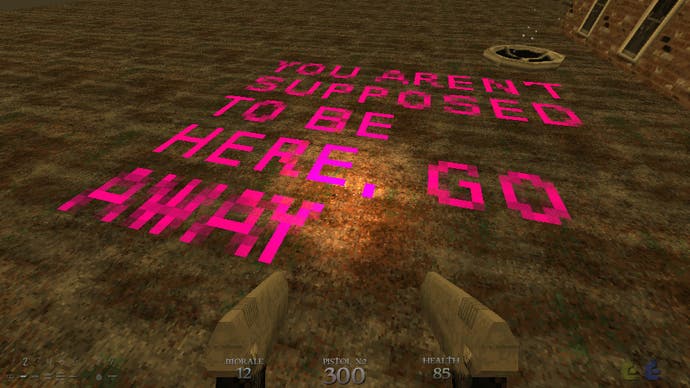
These are accidents and glitches, but then again, if we're not supposed to gaze into the abyss, then why is the void such a popular trope in games? It seems any self-respecting fantasy game offers its players a tour of the void: There's the Void of the Dishonored games (read more about it here), the Fade of the Dragon Age series, the Realm Between Realms of God of War (2018). Divinity: Original Sin 2 and Pillars of Eternity 2: Deadfire also dip their toes into the great nothingness. These are metaphysical spaces inhabited by or associated with gods and spirits, the afterlife, and, most significant of all, origins and acts of creation. They are displaced and timeless, existing in between or beyond conventional space-time, and are only accessible through special pathways that pierce the veil: dreams, visions, rituals, death or magic.
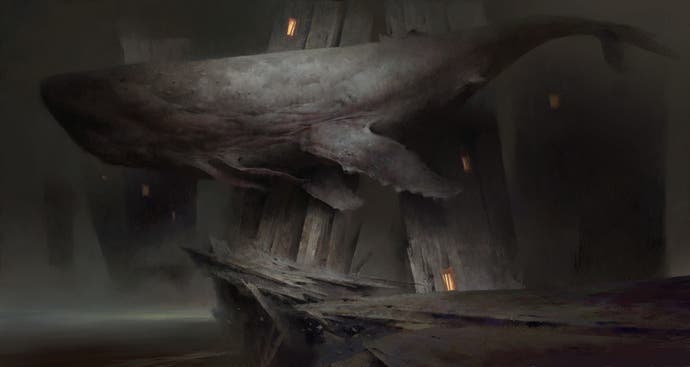

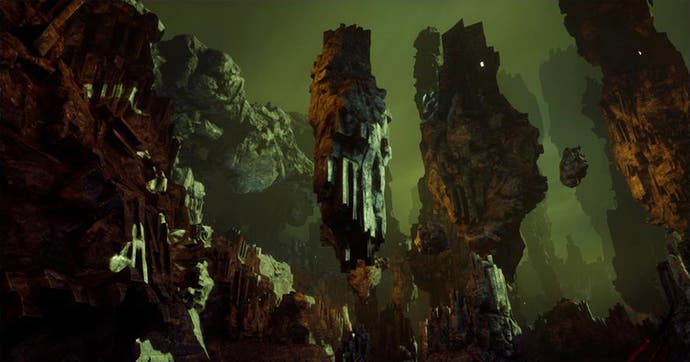

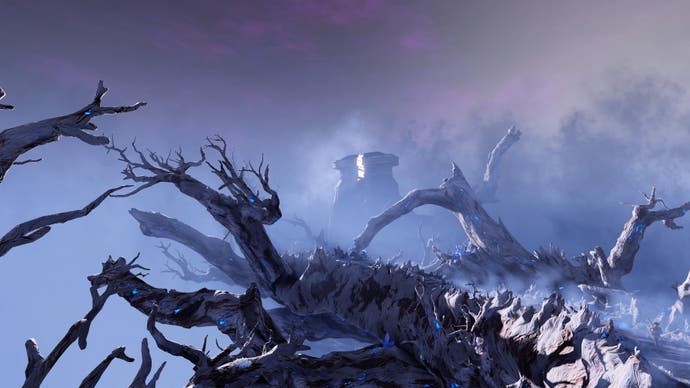
Mythologically speaking, they recall the idea of the primordial chaos, such as the Hebrew 'Tohu wa-bohu': "And the earth was without form, and void; and darkness was upon the face of the deep" (King James translation). They may be described as fragmented, broken and disjointed spaces, but their impression is not always one of ruination or decay, but also of unfinished creation. They are realms of unrealised potential, unformed matter and empty space that is yet to be filled. Matter, mostly rocks but sometimes other structures or objects, are often shown distorted and floating, as if they hadn't fully manifested or found their place in solid reality just yet.
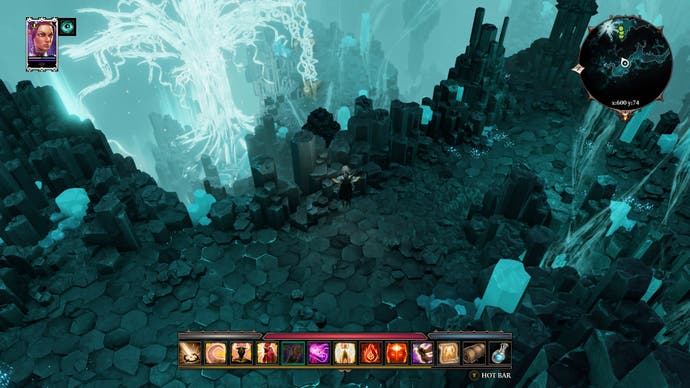
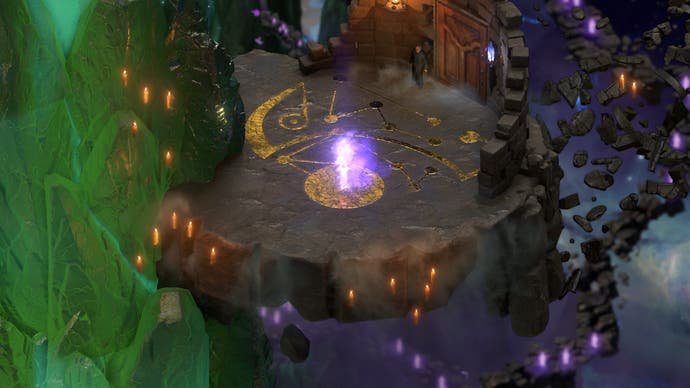
The void gapes in many places, appearing sometimes as a metaphorical or psychological realm. In The Gardens Between, we explore islets disconnected from the rest of the world by a thick fog and sprinkled with seemingly random everyday objects with distorted and blown-up proportions: giant gaming consoles and TVs, furniture, beach balls etc. Each islet and its assorted objects point to a shared childhood memory of the two protagonists. Here, the idea of the void signifies the passing of time and the ephemerality of memories.


In Ice-Pick Lodge's The Void, the eponymous non-space functions as a metaphor for dying. Trapped in a grey and stagnating limbo, the protagonist's trespassing soul must gather and grow various colours to keep the void alive and prevent a final and absolute death; if untended to, colour will simply seep out into nothingness and be lost forever. It's our goal to fill the void, not with things or forms, but with the vibrancy of colour, which comes to be associated with life and growth.
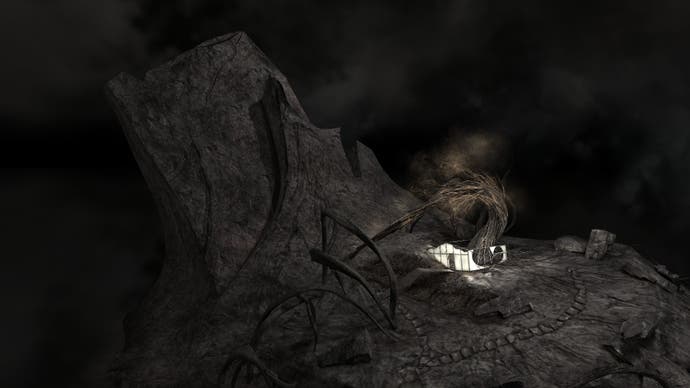

In Devotion, our fiercely religious protagonist is guided through a vision of hell, which is defined by oppressive stone formations protruding from an impenetrable wall of fog. This hellish void, too, is a metaphorical rather than a literal place or state, a manifestation of the protagonist's struggles with a life that has crumbled away all around him, framed and understood as a religious experience.
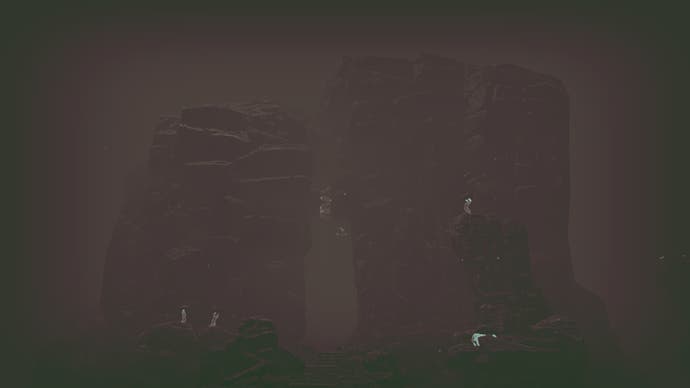
Horror and the void are comfortable bedfellows. From Doom's own version of hell to the cosmic horror and twisted, disorienting spaces of Dusk or Thumper, many horror-themed games cast us adrift in negative space. The refusal to place us in a well-defined and "filled in" world of stable points of reference not only conjures an existential dread in the face of an unknowable and vast universe, it also plays with a sort of horror vacui, the fear of empty space, by refusing and subverting the expectations of exuberant detail and plenitude that has been set by mainstream games. Exposing players to so much empty space, apparently "unfinished", provisory and still waiting to be filled, feels almost perverse and antithetical to the very idea of game design or creativity. Art, like nature, abhors a vacuum. And even though we have been invited, we feel like perhaps we aren't supposed to be here.
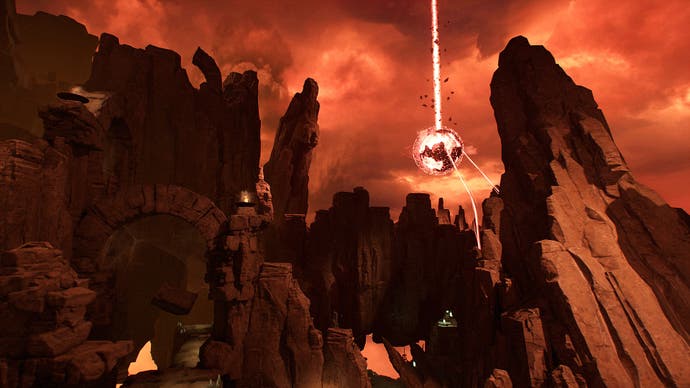


For the cyberpunk horror game Observer, the horror of emptiness is a digital phenomenon, and its digital abyss manifests itself through glitch aesthetics as seemingly solid spaces are worn away and corrupted by computer malfunction. The very ground beneath our feet becomes suspect as the buildings, objects and bodies around us are exposed as a thin veneer covering nothing at all.
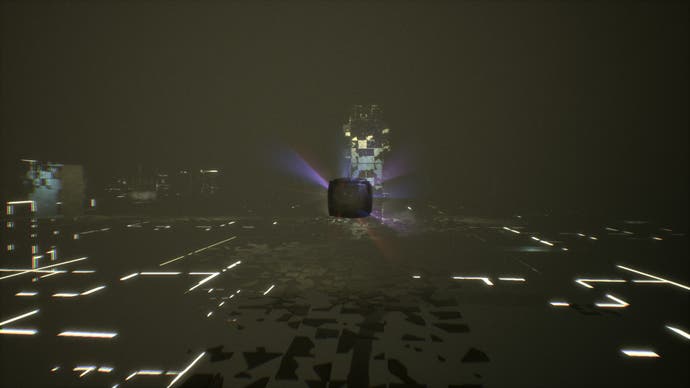
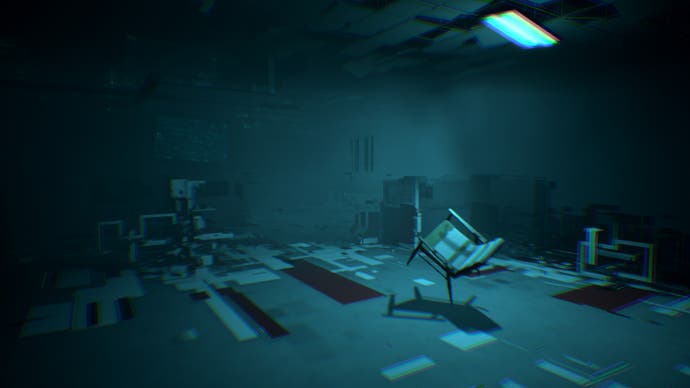
Observer is far from the only game that links computer simulation and the idea of the void. Transistor's cyberworld is similarly immaterial, contingent and subject to processes that can reshape or corrupt. Far more aggressive is the shattered digital abyss of Memory of a Broken Dimension, where any sense of coherence and meaning is lost in a grey storm of jagged shards, digital artefacts and visual noise. Neither is it a coincidence that games like Assassin's Creed or God of War use short excursions into void-like in-between spaces as hidden loading screens: the void literally becomes a space of (digital) creation in progress, a metaphor or visualisation of a process that works invisibly behind the screen.
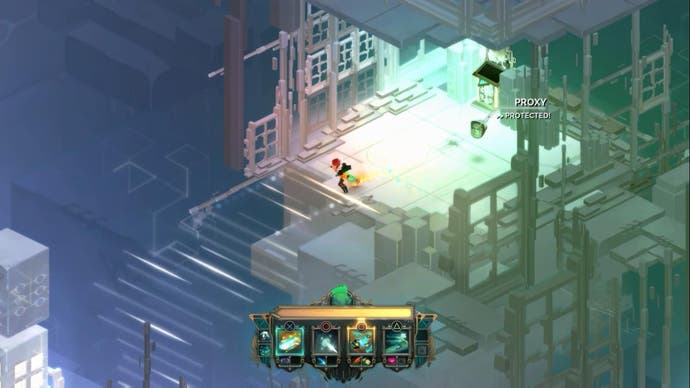
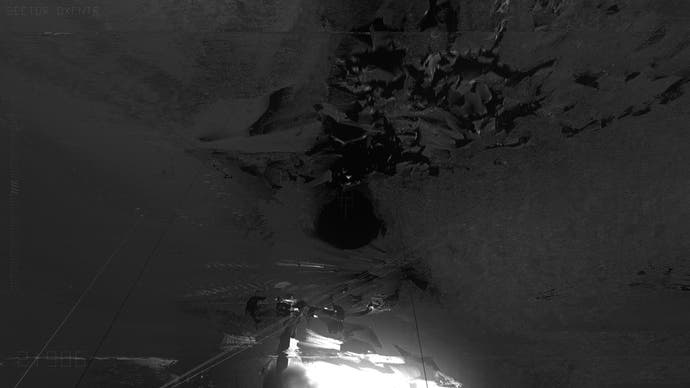


The void comes in many shapes and sizes. It isn't really any one thing, but a cluster of ideas that share affinities. For Dishonored, the Void is like the ocean. For others, it's like hell, or death, or the primordial chaos, or the human psyche, or the ether between the stars, or, finally, like a simulation that runs nothing, or hasn't fully loaded yet. It's impossible to show the void in a game without creating some resonance with that last affinity towards the digital. After all, visiting the void in games is a bit like walking through a broken or unfinished digital world, with the accompanying fascination of sneaking a peek at a secret world behind the veil.
At the same time, however, the void is also a source of discomfort and unease that threatens illusions we depend on. Perhaps as a result, most games present a void that's safe, polished and meaningful within the game's world and fiction. Horror games go further than most to make their abysses seem raw and dangerous, places we aren't supposed to see, but even they have little choice in turning the void into part of an ordered and coherent whole. At the end of the day, perhaps the only authentic version of the void is an accidental, pointless one, like the one we see as we clip through the ground and plunge eternally into the abyss.










